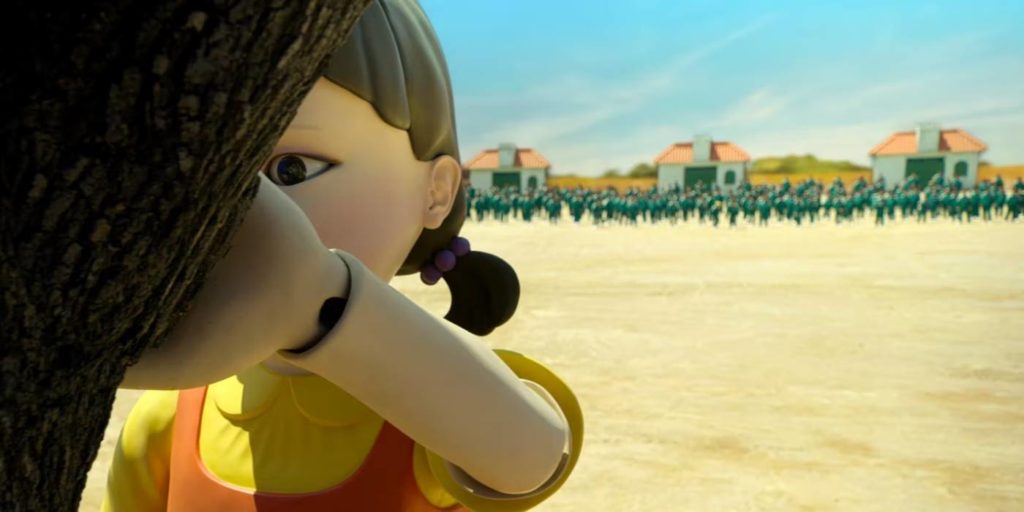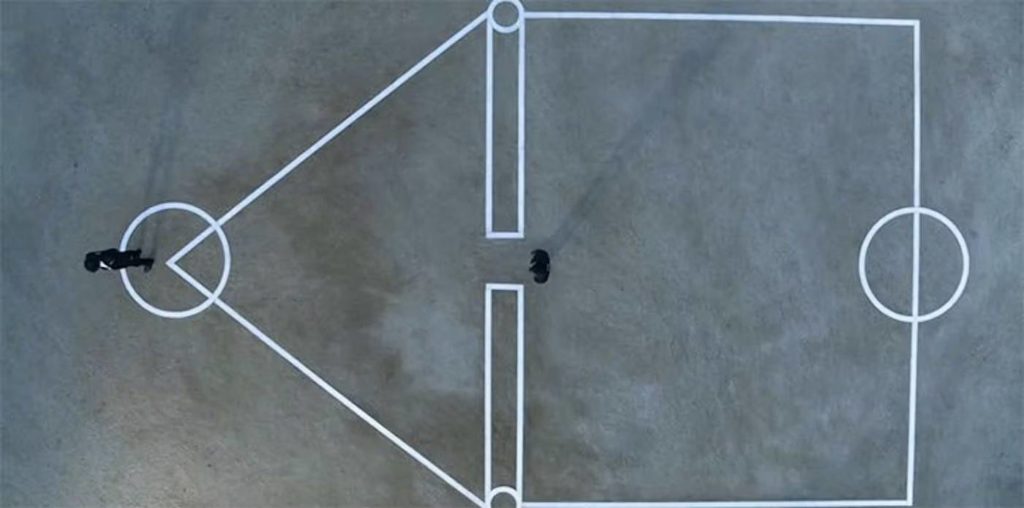These days, if you take a stroll through the virtual halls of the internet, you’ll undoubtedly run upon some memes, videos, and quotations regarding the Netflix Korean smash series Squid Game. Squid Game has been the streamer’s biggest hit, garnering over 100 million views in the first month of its debut. As a result, people are talking about it all around the world, debating hypotheses, and, of course, remembering some of their favourite video games from their youth. In case you haven’t seen it (or you’ve been living under a rock), the show centres on a group of 400+ people who choose to take part in a hazardous competition in which they could die or become extremely wealthy. They are all shocked to learn that each round of the Squid Game is a recreation of a kid’s game, but with real-world consequences.
What are those games, then, and how are they listed? Let’s dissect them.
The Recruiting Process 
The first competition in the series, albeit not a part of the Squid Game, is a game that each of the 464 competitors must complete in order to advance to the main event. This game, which is known as “ddakji” in Korean, is a lot like playing pogs in that you must toss a paper card on top of another in order to turn it over. You prevail if it does flip over. The first battle in Squid Game is obviously rigged because the recruiter (Gong Yoo) gives a tonne of money if he loses and just smacks the opponent in the face if he wins. This is done to keep potential contestants intrigued and then entice them to the Squid Game, which has bigger stakes.
Red Light, Green Light
Children all throughout the world like playing the first Squid Game game. It’s the kind of game that grows better the more players there are. In the game Red Light, Green Light, a predetermined area is established, and all players are free to move while one player (the leader) stands in one end with their back to the other players. Everyone is free to move when the lone player cries “red light, green light, one two three.” However, when they reach “three,” everyone must freeze. If someone is seen moving, they must stop immediately or return to the beginning. The rules of the game vary, but the objective is to get from point A to point B without being “seen.” Getting past the leader when they have their back is, for the most part, the final objective. In others, you have to go close enough to the leader’s tree to touch it without moving while doing so.
When the leader’s head is directed toward a large tree in Squid Game, players are given the ability to move. She chants “the Hibiscus flower has bloomed,” which is what Korean children say in place of “red light, green light,” when she isn’t paying attention. The players can approach her while she is chanting. You can’t trick her since her eyes contain motion detectors; when she stops and turns, anyone who moves gets shot to death.
Sugar Honeycombs
Because you can’t rely on power, cunning, or taking advantage of other players, Sugar Honeycombs is probably one of the most challenging games in Squid Game. Patience is the key to advancing past Round 2. And, as it turns out, a lot of saliva.
Each player receives a cylinder-shaped tin for this game, which when opened reveals a sugar honeycomb with one of four possible forms modelled into it: a circle, triangle, star, or umbrella. The players must carve out the shapes with only a needle while maintaining the integrity of their design; failure to do so results in death. Simple, yes? The sugar honeycomb can shatter into pieces if you aren’t careful because it is so delicate. Gi-hun (Lee Jung-jae) learns that wetting the sugar honeycombs is the best way to not break them since they get softer and it is simpler to carve out the shapes without breaking them, whereas most players use the needles to create tiny incisions on the margins of each shape (which takes forever).
Tug of War
The tug of war challenge forces each group of players to use all of their strength and greatest talents to cause the other group to fall to their deaths. It is unquestionably one of the best rounds in Squid Game. The opposition team must fall past the centre mark by pulling on a heavy rope in order to win. Anything goes to make that happen, including intimidating the enemy group, using all of your might, and other strategies.
Tug-of-war doesn’t always have to be about which group is stronger, as Il-nam (O Yeong-su) notes. There are strategies for winning even if your team doesn’t contain any bulky individuals. These include waiting until your opponents are exhausted before exerting all of your strength, dividing your team’s members among the rope’s sides, and using your entire body weight as opposed to just your upper body.
Marbles
In Squid Game, this round is used less as a hard entry in the tournament and more as an episode to take a break while getting to know some people better. Ten marbles are placed in each player’s bag, which is then separated into pairs. The objective is to take every marble your opponent owns, but they rapidly realise that one of them will die between themselves and the partner they paired up with (often the person they have become closest to).
Since the couples were selected by the participants themselves, this was the first time they were personally accountable for the death of someone they cared about in the competition, even if everyone knew that the majority of them wouldn’t make it to the end. Players are allowed to exploit any minigame to their advantage, such as guessing how many marbles the other player is holding in their closed fists or tossing marbles into a hole. But once they understand they’ll have to kill a close buddy in order to advance to the next round, the players naturally don’t care too much about the strategy they employ.
Hopscotch
An adaptation of one of the most well-liked kid’s games is called Round 5. In the original version of hopscotch, you move between squares by jumping, dodging some of them along route, and then returning. But in Squid Game, there is simply no turning back. Players must hop their way across a bridge that has two adjacent glass squares. While the glass square next to it is brittle and cannot support anyone jumping on it, the glass square next to it is tempered and can support up to two players at once. Finding out which is which in sixteen minutes or less is the “fun” part. The first player in this game has no prior information of which side to select, whereas the final player has observed 15 players make the right or wrong choice, making their challenge to cross the bridge in time. This means that no player in this game has an equal advantage.
Squid Game
The Front Man (Lee Byung-hun), who plays the game in the final round, claims that it is one of the most brutal games that Korean children have ever played. Two teams compete to encroach on each other’s territory as they create a square, a triangle, and two circles on the ground (the same shapes used throughout the entire series). The tough thing is that, in most places, you must hop on one foot and are not allowed to touch any lines. Of course, other players will make every effort to trip you up. To help you envision it a little better, watch the brief movie below.








